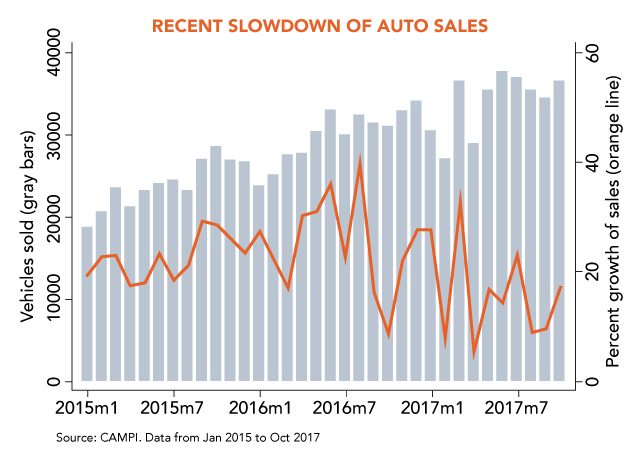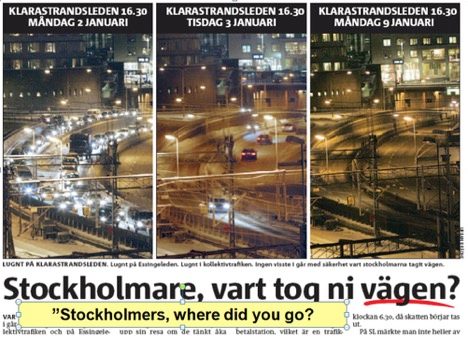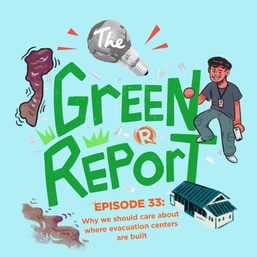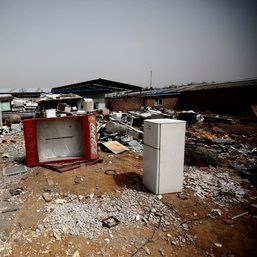SUMMARY
This is AI generated summarization, which may have errors. For context, always refer to the full article.
![[OPINION] How can we solve our traffic woes in 2018?](https://www.rappler.com/tachyon/r3-assets/612F469A6EA84F6BAE882D2B94A4B421/img/A2577A347A254707B28DD49FBA32CAA9/traffic-in-2018-20171207.jpg)

2018 is fast approaching, but next year’s traffic promises to be as slow as ever.
As proof of how bad the situation is, traffic has gotten worse not just in Metro Manila but also in key provincial cities.
For example, weekends at Tagaytay have ceased to be the pleasurable road trips they once were because of the regular migration of Manila traffic. The gridlock at Baguio during the ASEAN week also proved to be a living hell for tourists and residents alike.
The costs of worsening traffic are depressing. A recent study claimed that Filipinos now spend an average of 16 full days stuck in traffic each year. By 2022 some Southeast Asian cities – including Metro Manila – also risk experiencing “standstill” levels of traffic during peak hours (that is, average speeds of less than 10 kph).
Why does traffic keep getting worse, and what can we do to solve it once and for all?
In my view, incentives lie at the heart of our traffic problems, and this article outlines a framework for the policies that could correct such incentives. It’s important to get them right: no less than our country’s progress (and our collective sanity) is at stake.
Wrong incentives
There are too many vehicles on our roads – especially private cars – yet the incentives to reduce their purchase and use are absent.
Figure 1 shows the robustness of auto sales in recent years, borne by a combination of fast economic growth, rising incomes, low downpayments, and cheap auto loans. The growth of auto sales peaked at 40% in August 2014, but this has since gone down to 17% in October 2017.

Figure 1. Data include passenger and commercial vehicles.
Private vehicles are not just easy to own but also cheap to use.
Oil prices, for instance, have dropped significantly in 2014 and are expected to remain stable at $54/barrel in 2018. This is owing to OPEC’s weakening cartel and continued production from American oil companies.
All these mean affordable gas and diesel prices for Filipinos in 2018 (although the peso’s expected depreciation toward P55 per US dollar might counteract this).
The new roads, highways, and bridges under the government’s flagship “Build, Build, Build” program are also bound to make private vehicles use easier. But these will not necessarily abate road congestion: in fact, by reducing travel time, more roads could just induce people to take more trips rather than less.
The new expressway linkages up north and down south, for example, might explain the increasing migration of Manila traffic to provincial cities like Baguio and Tagaytay. (READ: Carmaggedon redux: Will building more roads solve our traffic problems?)
All in all, the incentives toward fewer private vehicles on the road are absent: their relative benefits are too high while their relative costs are too low.
Modernize public transport
But herein lies a possible two-part solution to our congestion problems: if we want fewer private vehicles on the road, we need to reduce their relative benefits and increase their relative costs.
How can we reduce the relative benefits of private vehicles? Government, together with the private sector, must provide viable, comfortable, and safe public transport options that people will actually want to patronize.
Trains are the most important mass transit vehicles, and the Duterte administration is indeed aiming to build new, ambitious train projects (like Metro Manila’s first subway and Mindanao’s first railway). Though exciting, it will take a long time before these train projects come into fruition.
In the meantime, buses and jeepneys will play a crucial role because, relative to cars, they could transport the same number of people using so little space (as illustrated below in Figure 2).
On EDSA, for example, the MMDA estimated in 2015 that private cars and taxis constituted 88% of vehicles but transported only 30% of people. In contrast, PUVs constituted 12% of vehicles but transported 70% of people. Hence, the faster we can tip the scale from cars and taxis to buses and jeeps, the better.

Figure 2. Source: RA Siy.
Here, the government’s push for PUV modernization will be crucial. If we can expedite the installation of bus rapid transport networks and replace old jeepneys with new, spacious ones, then more people will be nudged to leave their cars at home and choose to commute instead, helping free up our roads.
But can the Duterte government resist strong pressures and lobbying efforts from entrenched bus and jeepney operators? Here is where the President’s tough talk and action could actually work in the public’s favor.
Implement congestion pricing
On the flip side, we also need to make private vehicle ownership so costly that it discourages new purchases and frequent use.
One way is to impose higher taxes on autos and petroleum products. The tax reform bill pending in Congress aims to do exactly this.
But to effectively solve the traffic mess, perhaps it’s time to implement – once and for all – some form of “congestion pricing” which charges people a fee for their road use.
Congestion pricing is always a tough sell. In Stockholm, for example, it was initially met by fierce opposition: a whopping 70% of people disapproved it. But when they saw the resulting drastic improvement in rush hour traffic, approval ratings for congestion pricing shot up.
Figure 3 below shows what happened immediately after Stockholm implemented congestion pricing on January 3, 2006. It led to a permanent 20% reduction of vehicles during peak hours. (Watch here a related TED talk.)

Figure 3. Right before and after congestion pricing was implemented in Stockholm in 2006. Source: toolsofchange.com.
Why does congestion pricing work? Whenever we use roads, we impose costs on other people for the space we take up. When all of us ignore such costs, we end up “harming” each other unwittingly, thus resulting in road congestion.
To avoid congestion, therefore, people need to pay for the external costs of their road use. This can be done by charging a “congestion fee” which increases during peak hours (e.g., 8 am and 5 pm) and decreases during off-peak hours (e.g., midnight).
Congestion pricing has worked wonders in many places abroad, not just in Stockholm: the number of vehicles on the road typically decrease, travel times increase, road accidents go down, and air quality goes up.
It’s a pity that congestion pricing is not at all part of the government’s Dutertenomics program. Their current strategy of building more roads and bridges is too simplistic and will not necessarily abate congestion (in fact, it may exacerbate it).
Of course, congestion pricing is easier said than done. Although the technology already exists – mainly automatic recognition cameras that can read license plates – its adoption may be hampered by our procurement laws and the lack of a reliable registration system. Are the LTO and LTFRB up to the task?
Congestion pricing may also appear to be regressive or antipoor. But this need not be the case: government can come up with offsetting transfers and keep many alternative roads off congestion pricing. The congestion fees also need not be too high: the drastic 20% decline of congestion in Stockholm was caused by a peak-hour congestion fee of just 2 euros.
Despite the challenges, it’s time for our leaders to seriously consider modern, radical, and tested options like congestion pricing.
Correct the incentives in 2018
Our country’s problem with road congestion is, at its core, a problem of incentives: the right ones are simply not in place.
The solution is fairly simple: correct the existing incentives by reducing the relative benefits of private vehicles and increasing their relative costs.
But these require political courage and focus from the Duterte government, and may require potentially unpopular policies. These include: higher taxes on automobiles and petroleum; resisting the urge to just build new roads; fighting for PUV modernization; and seriously considering congestion pricing.
In all these, I’m not sure what the proposed traffic “emergency powers” entail and how useful they can be.
But if only President Duterte focused on our traffic woes half as much as he talks of the war on drugs or “RevGov,” then – even without emergency powers – we might be that much closer to licking our traffic problems once and for all. – Rappler.com
The author is a PhD candidate at the UP School of Economics. His views are independent of the views of his affiliations. Thanks to RA Siy, a transport economist, and Kevin Mandrilla for valuable comments and suggestions. Follow JC on Twitter: @jcpunongbayan.
Add a comment
How does this make you feel?
![[OPINION] Fossil fuel debts are illegitimate and must be canceled](https://www.rappler.com/tachyon/2024/04/IMHO-fossil-fuel-debt-cancelled-April-16-2024.jpg?resize=257%2C257&crop_strategy=attention)
![[WATCH] John Kerry: You can’t solve climate crisis without addressing ocean’s challenges](https://www.rappler.com/tachyon/2023/12/cop28-united-states-john-kerry-december-2-2023-reuters-001.jpg?resize=257%2C257&crop_strategy=attention)



There are no comments yet. Add your comment to start the conversation.